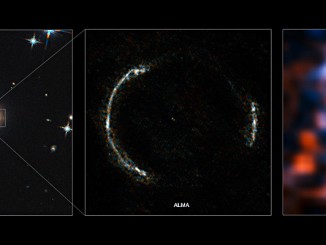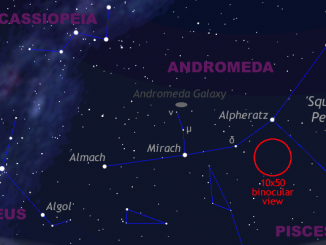
By nailing down what percentage of stars have a particular mass within a cluster, or the Initial Mass Function (IMF), scientists can better interpret the light from distant galaxies and understand the formation history of stars in our universe.
The intensive survey, assembled from 414 Hubble mosaic photographs of M31, was a unique collaboration between astronomers and “citizen scientists,” volunteers who provided invaluable help in analysing the mountain of data from Hubble.
“Given the sheer volume of Hubble images, our study of the IMF would not have been possible without the help of citizen scientists,” said Daniel Weisz of the University of Washington in Seattle. Weisz is lead author on a paper that appeared in the 20 June issue of The Astrophysical Journal.
Stars are born when a giant cloud of molecular hydrogen, dust, and trace elements collapses. The cloud fragments into small knots of material that each precipitate hundreds of stars. The stars are not all created equally: their masses can range from 1/12th to a couple hundred times the mass of our Sun.
Prior to Hubble’s landmark survey of the star-filled disc of M31, astronomers only had IMF measurements made in the local stellar neighbourhood within our own galaxy. But Hubble’s bird’s-eye view of M31 allowed astronomers to compare the IMF among a larger-than-ever sampling of star clusters that are all at approximately the same distance from Earth, 2.5 million light-years. The survey is diverse because the clusters are scattered across the galaxy; they vary in mass by factors of 10, and they range in age from 4 million to 24 million years old.
To the researchers’ surprise, the IMF was very similar among all the clusters surveyed. Nature apparently cooks up stars like batches of cookies, with a consistent distribution from massive blue supergiant stars to small red dwarf stars. “It’s hard to imagine that the IMF is so uniform across our neighbouring galaxy given the complex physics of star formation,” Weisz said.
This evidence also implies that the early universe did not have as many heavy elements for making planets, because there would be fewer supernovae from massive stars to manufacture heavy elements for planet building. It is critical to know the star-formation rate in the early universe — about 10 billion years ago — because that was the time when most of the universe’s stars formed.
The PHAT star cluster catalog, which forms the foundation of this study, was assembled with the help of 30,000 volunteers who sifted through the thousands of images taken by Hubble to search for star clusters.
The Andromeda Project is one of the many citizen science efforts hosted by the Zooniverse organization. Over the course of 25 days, the citizen-scientist volunteers submitted 1.82 million individual image classifications (based on how concentrated the stars were, their shapes, and how well the stars stood out from the background), which roughly represents 24 months of constant human attention. Scientists used these classifications to identify a sample of 2,753 star clusters, increasing the number of known clusters by a factor of six in the PHAT survey region. “The efforts of these citizen scientists open the door to a variety of new and interesting scientific investigations, including this new measurement of the IMF,” Weisz said.



